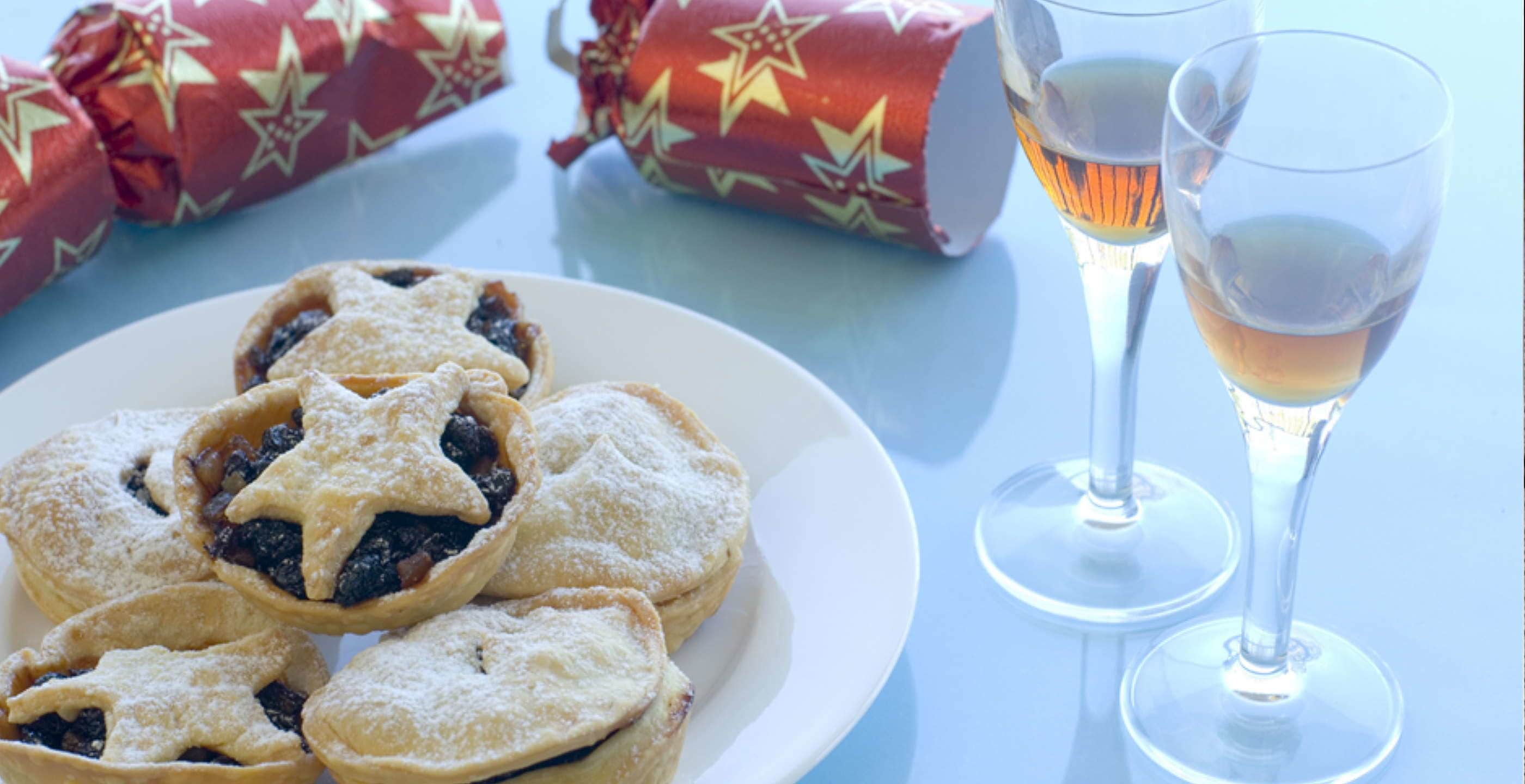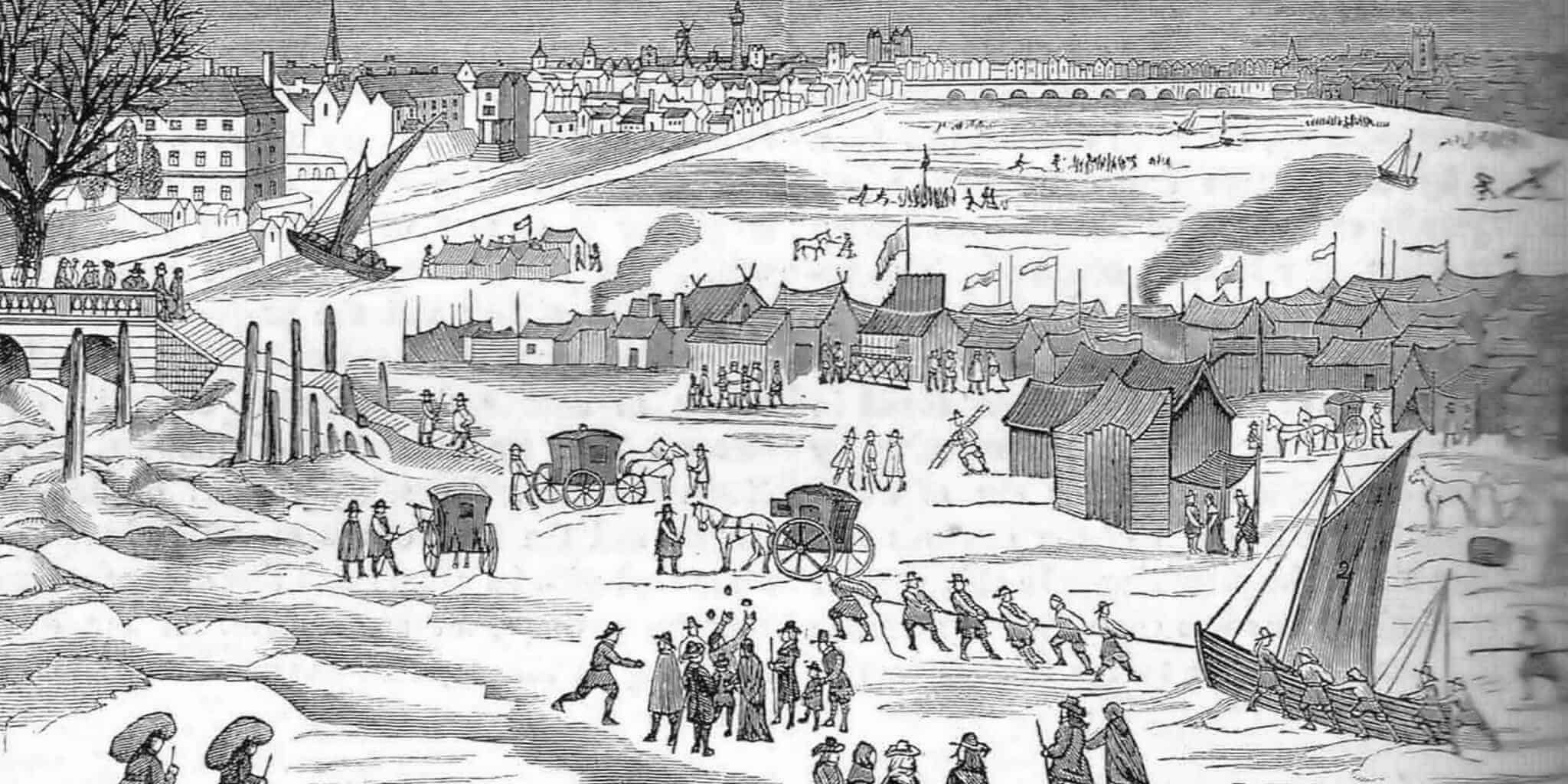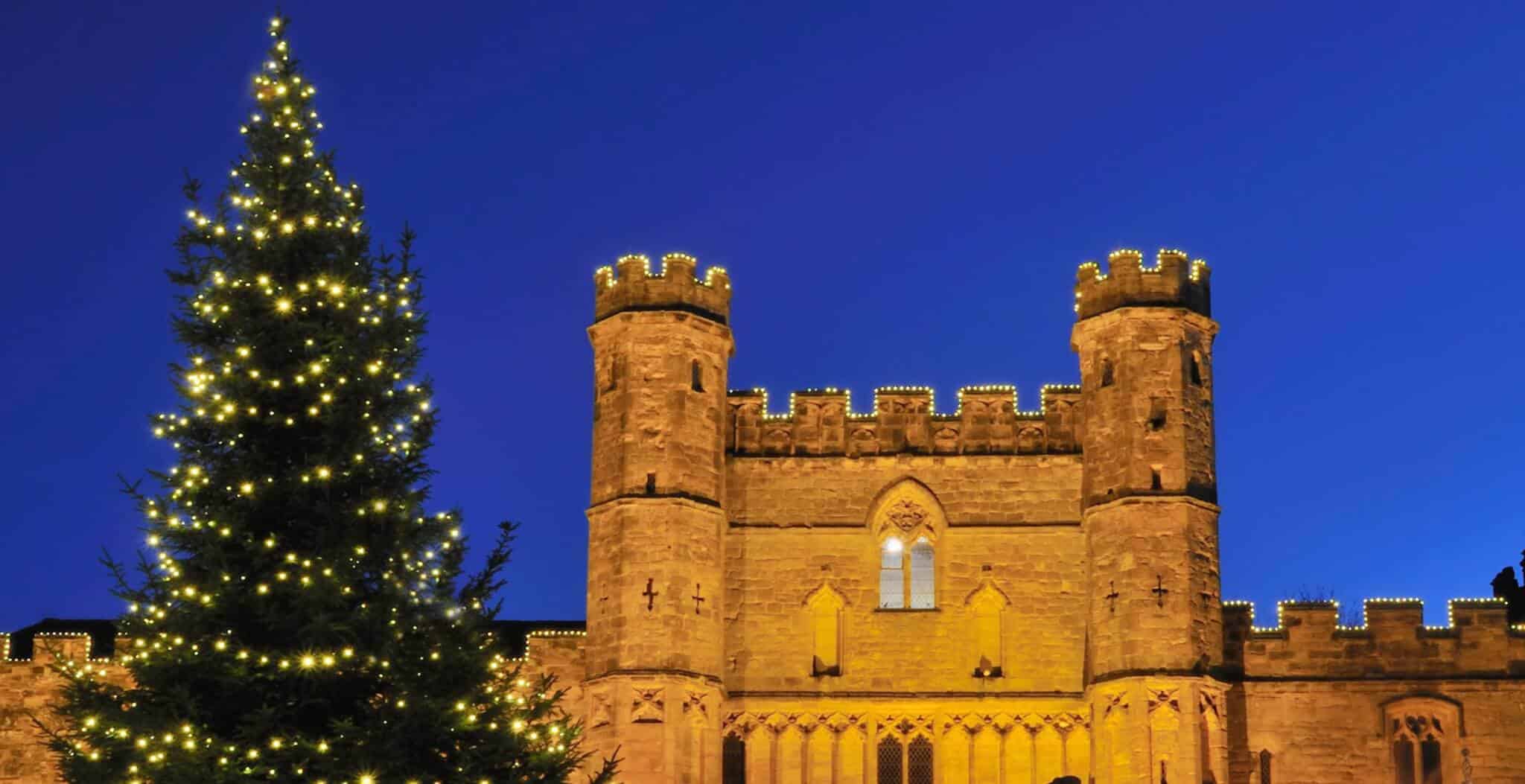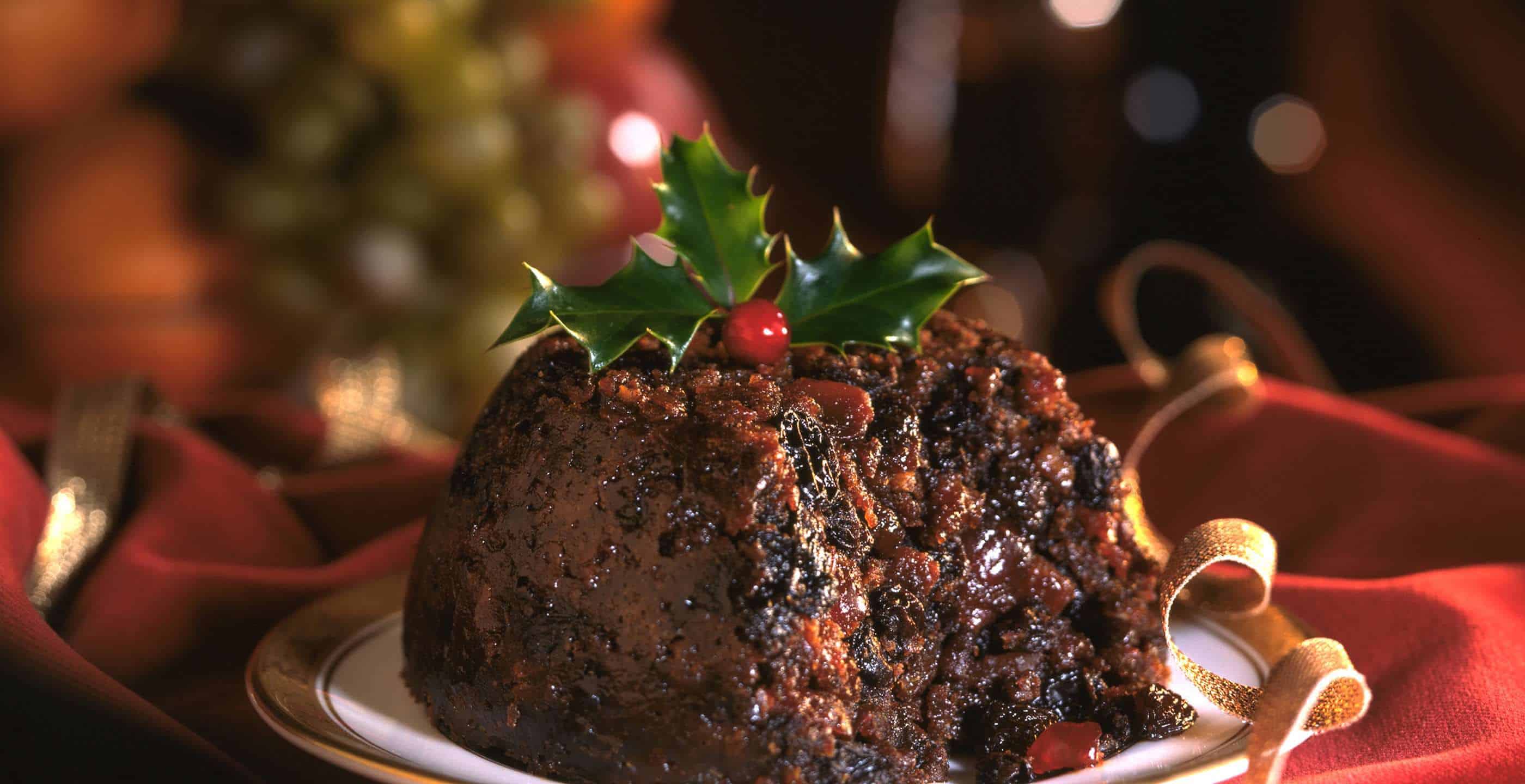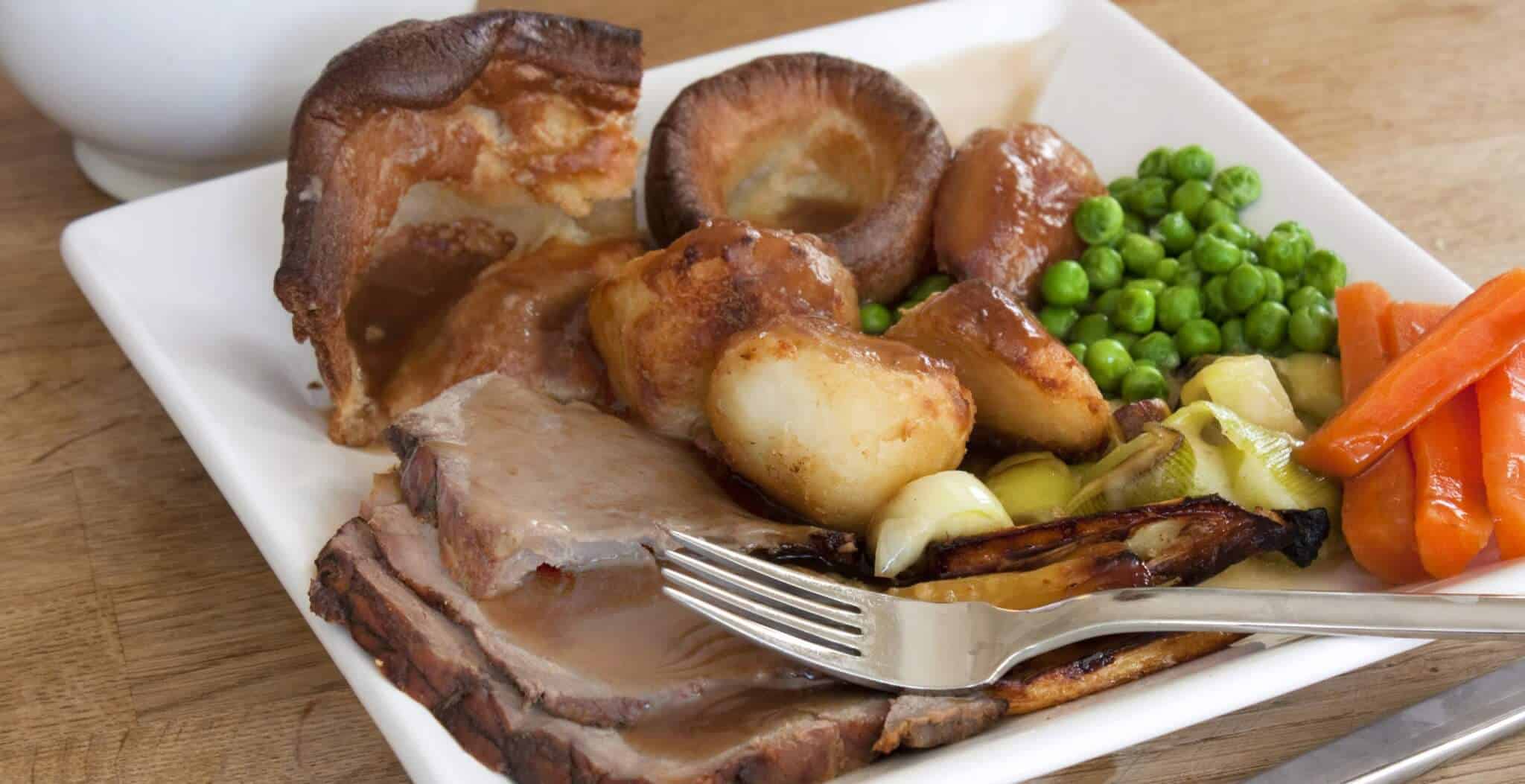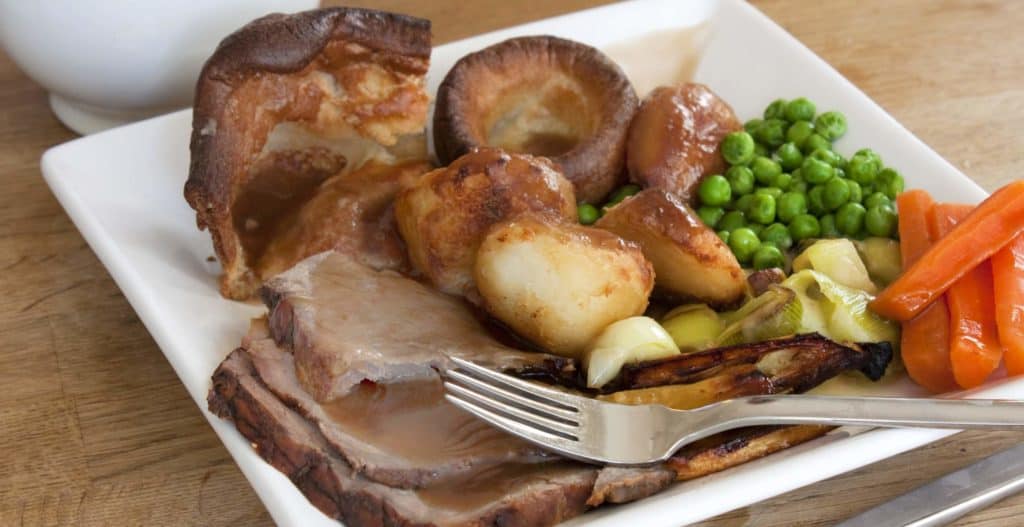One of the favourite sweet treats at Christmas is the mince pie. This crumbly pastry is filled with fruit, often soaked in brandy and flavoured with citrus and mild spice. However, the mince pie was originally a savoury pie – and not even round!
In the Tudor period they were rectangular, shaped like a manger and often had a pastry baby Jesus on the lid. They were made from 13 ingredients to represent Jesus and his disciples and were all symbolic to the Christmas story. As well as dried fruit such as raisins, prunes and figs, they included lamb or mutton to represent the shepherds and spices (cinnamon, cloves and nutmeg) for the Wise Men. It was only later, post Reformation, that the mince pie adopted a round shape.
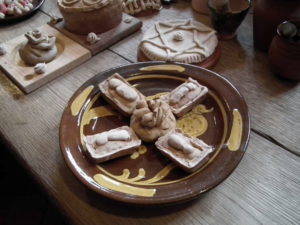 Tudor mince pies with pastry baby Jesus on the lid.
Tudor mince pies with pastry baby Jesus on the lid.
Whilst it seems pretty unpalatable to us to mix meat with sweeter ingredients such as figs, raisins and honey, it was quite usual in the Middle Ages.
A Tudor Christmas feast would include several different types of pie. The pastry crust of a pie was called a coffin and was often made just from a mixture of flour and water and used mainly for decoration. Small pies were known as chewets and had pinched tops, giving them the look of small cabbages or chouettes. The earliest reference to a small mince pie as a ‘minst pye’ rather than a chewet occurs in a recipe from 1624, called ‘For six Minst Pyes of an Indifferent Bigness‘.
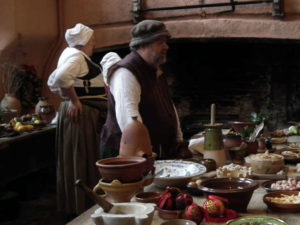
It’s hard to know exactly when meat stopped being included in the mince pie. In the Medieval and Tudor period the meat of choice for a mince pie was lamb or veal. By the 18th century it was more likely to be tongue or even tripe, and in the 19th century it was minced beef. It was not until the late Victorian period and early 20th Century that mince pies dropped the meat and had all fruit fillings (albeit with suet).
Even today there are traditions associated with mince pies. When making the mincemeat mixture for the pies, for good luck it should be stirred in a clockwise direction. You should always make a wish when eating the first mince pie of the season and you should never cut one with a knife.
